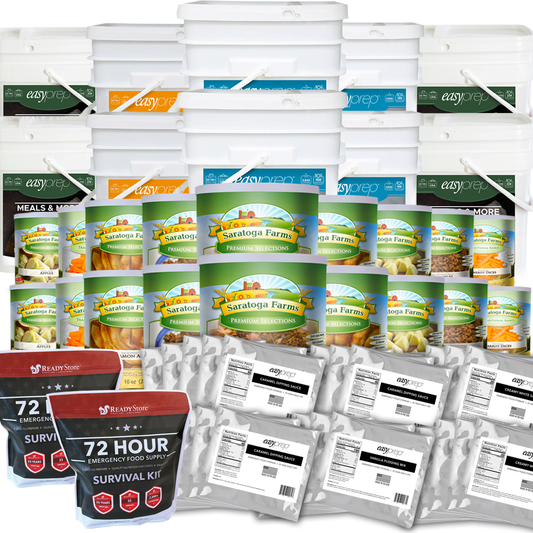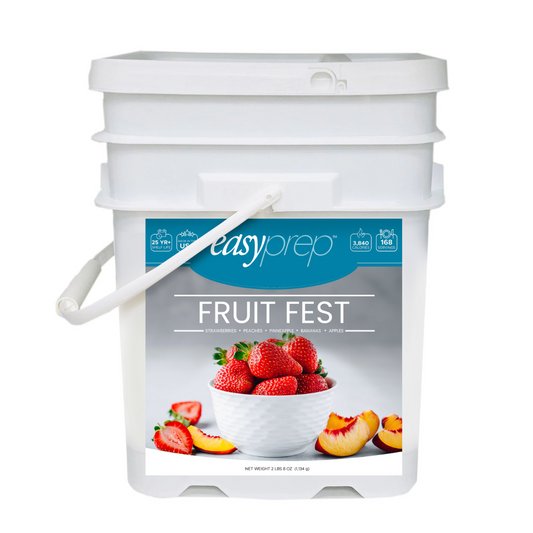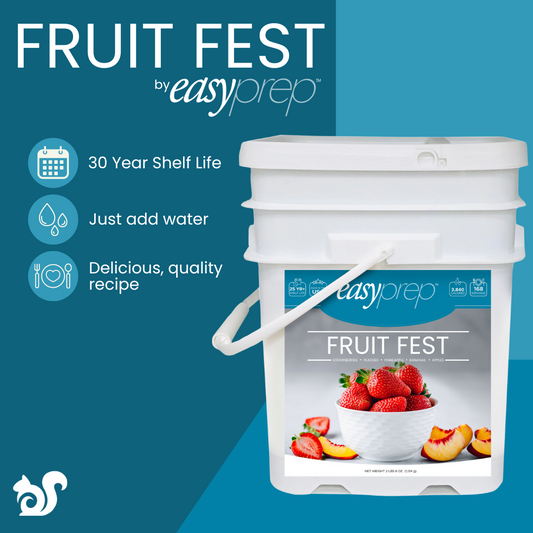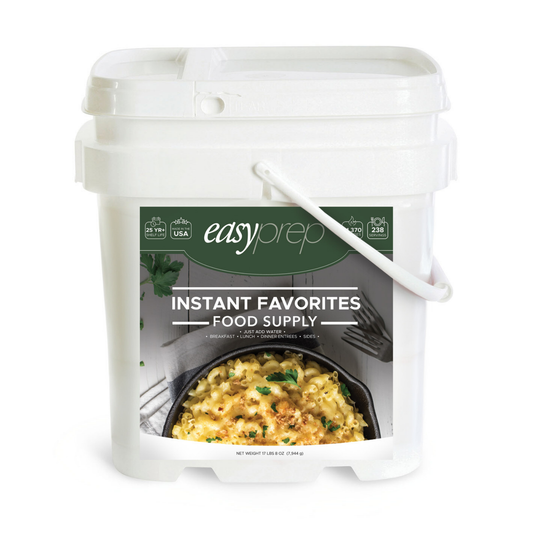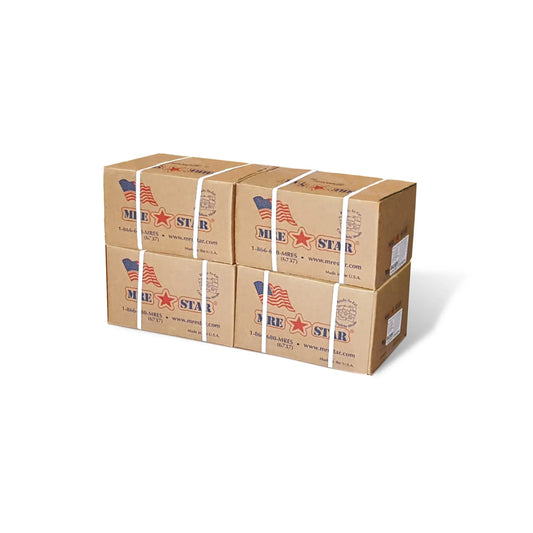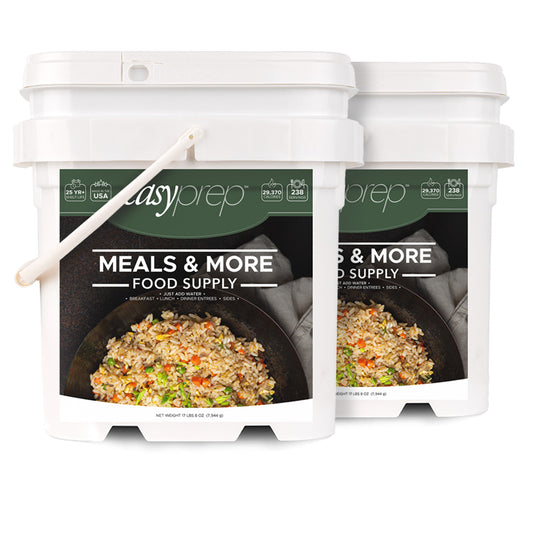Build Your Own Root Cellar
18 Apr 2014
One of the best things about potatoes, cabbages and other cold-season crops is the fact that they can be stored for months without spoiling. All you need to do this successfully is a cool, well-ventilated area. While an extra fridge can do this quite well, what’s far superior is a root cellar.
Historically, root cellars were underground rooms built beneath or next to the home. They were insulated by the ground itself and well ventilated so that airflow could keep them cool during the warmer months. The vents would be closed during the winter to keep the root cellar above freezing. A traditional root cellar is more spacious than a fridge, and can be quite convenient and very useful for long-term vegetable storage.
 Thanks to modern insulation, most basements these days are a bit too warm for storing vegetables over the long term. But you can still build a root cellar in the traditional homesteader style by sectioning off a corner of the basement and adding ventilation. This will create the kind of airflow you need to be able to bring the right amount of cold air in from the outside and keep the ambient temperatures close to, but also above, freezing through the cold winter. It’s important to remember to keep an eye on the outdoor temperature and make sure you shut the vents before it drops too low, because freezing most vegetables will damage them.
A Successful Root Cellar
There are a few aspects of any successful root cellar that you should keep in mind no matter where you are building it or what kind of basement you have.
Ventilation. The first is where it will be located. Since you will want to have it ventilated with fresh outside air, it’s usually best to position the root cellar in an area that has a window. While you can cut vents in a wall of the basement, it is much simpler to just remove the windowpanes and replace them with plywood that you can then run the vents through. If you live in a region that experiences particularly cold winters, you can also replace the windowpane with an insulated section of plywood. To do this, cut a 1-inch thick piece of polystyrene insulating foam and two pieces of ½-inch exterior-grade plywood to fit the window. Attach the plywood on both sides of the foam with polyurethane adhesive.
Location. You’ll also want to choose a corner location for your root cellar, if possible. The exterior walls of the basement are perfect for creating the best indoor temperatures for the root cellar – and if you have bare masonry, even better. Placing the root cellar in the corner allows for the highest ratio of exterior walls, and also cuts down on how many interior walls you will have to build out. Finally, if you can select a corner on the northern side of the building, that’s even better.
Measure Space. Now that you have selected the location and replaced the windowpane with an insulated panel that can hold the ventilation shafts, concentrate on the walls. As with any major build-out project, it’s best to measure the space and sketch out a plan on paper before you begin buying or cutting any wood. Your root cellar does not need to be much bigger than the average pantry: A six-by-six foot space is usually more than big enough.
Wooden Frame. Once you have figured out the footprint for your root cellar, you will need to build out a wood frame for the walls and doorway. Fortunately, the walls do not need to be load-bearing, which makes the job a lot simpler. Your studs can be more than two feet apart if you are on a tight budget, but no matter how you design the walls, they will have to be secured at the floor and ceiling. There are a few ways you can do this.
When you are cutting the wall studs, you will want to make them a height that can leave about ¼-inch space between the top of the wall and the joists above them. This allows you to easily angle the wall into place and then secure it with #10 3.5-inch screws. Then, using a tapered soft wood wedge and wood glue, fill the gap between the joists and the ceiling before installing the screws. This should create a more or less seamless section at the top of the wall.
Thanks to modern insulation, most basements these days are a bit too warm for storing vegetables over the long term. But you can still build a root cellar in the traditional homesteader style by sectioning off a corner of the basement and adding ventilation. This will create the kind of airflow you need to be able to bring the right amount of cold air in from the outside and keep the ambient temperatures close to, but also above, freezing through the cold winter. It’s important to remember to keep an eye on the outdoor temperature and make sure you shut the vents before it drops too low, because freezing most vegetables will damage them.
A Successful Root Cellar
There are a few aspects of any successful root cellar that you should keep in mind no matter where you are building it or what kind of basement you have.
Ventilation. The first is where it will be located. Since you will want to have it ventilated with fresh outside air, it’s usually best to position the root cellar in an area that has a window. While you can cut vents in a wall of the basement, it is much simpler to just remove the windowpanes and replace them with plywood that you can then run the vents through. If you live in a region that experiences particularly cold winters, you can also replace the windowpane with an insulated section of plywood. To do this, cut a 1-inch thick piece of polystyrene insulating foam and two pieces of ½-inch exterior-grade plywood to fit the window. Attach the plywood on both sides of the foam with polyurethane adhesive.
Location. You’ll also want to choose a corner location for your root cellar, if possible. The exterior walls of the basement are perfect for creating the best indoor temperatures for the root cellar – and if you have bare masonry, even better. Placing the root cellar in the corner allows for the highest ratio of exterior walls, and also cuts down on how many interior walls you will have to build out. Finally, if you can select a corner on the northern side of the building, that’s even better.
Measure Space. Now that you have selected the location and replaced the windowpane with an insulated panel that can hold the ventilation shafts, concentrate on the walls. As with any major build-out project, it’s best to measure the space and sketch out a plan on paper before you begin buying or cutting any wood. Your root cellar does not need to be much bigger than the average pantry: A six-by-six foot space is usually more than big enough.
Wooden Frame. Once you have figured out the footprint for your root cellar, you will need to build out a wood frame for the walls and doorway. Fortunately, the walls do not need to be load-bearing, which makes the job a lot simpler. Your studs can be more than two feet apart if you are on a tight budget, but no matter how you design the walls, they will have to be secured at the floor and ceiling. There are a few ways you can do this.
When you are cutting the wall studs, you will want to make them a height that can leave about ¼-inch space between the top of the wall and the joists above them. This allows you to easily angle the wall into place and then secure it with #10 3.5-inch screws. Then, using a tapered soft wood wedge and wood glue, fill the gap between the joists and the ceiling before installing the screws. This should create a more or less seamless section at the top of the wall.
 Floors. A lot of basement floors can be damp, so you may want to use some composite decking material or treated wood for the bottom of the wall. You are going to want to find one that is solidly composite throughout, because then you can install it just like a wooden wall plate.
You can either pre-drill holes into your concrete basement floor, or use construction adhesive and concrete nails to secure it. You can also hang a wooden door, or hang a PVC strip door. The latter will keep cold air in, is easier to install than hanging a wooden door, and allows you some leeway in deciding how wide your doorway will be.
Insulation. For insulation, it’s best to use stiff foam sheets rather than fiberglass batts. Foam sheets will be far more resistant to mold and water damage than fiberglass batts, and with a basement root cellar, moisture is always going to be a concern. Foam is also much safer to work with than fiberglass.
One of the best foam thermal insulators is extruded polystyrene. You may be required to cover it with fire-resistant materials in order to be up to code. While you’re designing your insulation plans, make sure you also think about the ceiling of the root cellar. Ambient warmth coming down from a heated area in the house could quickly undo all of the work you’ve done to keep your root cellar cool.
Dual Vents. The final consideration is your dual ventilation system. For best results, you will want place the inside ends of the intake and exhaust pipes on opposite sides of the root cellar. The exhaust vent should be close to the ceiling, and the intake vent should be close to the floor. This allows maximum airflow through the cellar.
Cover the vents with wire screens to prevent vermin from getting in. You may also want to consider adding an electric fan to the exhaust vent, although the natural airflow should keep the cellar at optimal temperature. You’ll also want to make sure your shelves are getting the benefit of the airflow; it’s best to use wire racks for that reason.
Your Advice?
Do you have a root cellar? Did you build it yourself? What advice would you give to others who are planning theirs?
Floors. A lot of basement floors can be damp, so you may want to use some composite decking material or treated wood for the bottom of the wall. You are going to want to find one that is solidly composite throughout, because then you can install it just like a wooden wall plate.
You can either pre-drill holes into your concrete basement floor, or use construction adhesive and concrete nails to secure it. You can also hang a wooden door, or hang a PVC strip door. The latter will keep cold air in, is easier to install than hanging a wooden door, and allows you some leeway in deciding how wide your doorway will be.
Insulation. For insulation, it’s best to use stiff foam sheets rather than fiberglass batts. Foam sheets will be far more resistant to mold and water damage than fiberglass batts, and with a basement root cellar, moisture is always going to be a concern. Foam is also much safer to work with than fiberglass.
One of the best foam thermal insulators is extruded polystyrene. You may be required to cover it with fire-resistant materials in order to be up to code. While you’re designing your insulation plans, make sure you also think about the ceiling of the root cellar. Ambient warmth coming down from a heated area in the house could quickly undo all of the work you’ve done to keep your root cellar cool.
Dual Vents. The final consideration is your dual ventilation system. For best results, you will want place the inside ends of the intake and exhaust pipes on opposite sides of the root cellar. The exhaust vent should be close to the ceiling, and the intake vent should be close to the floor. This allows maximum airflow through the cellar.
Cover the vents with wire screens to prevent vermin from getting in. You may also want to consider adding an electric fan to the exhaust vent, although the natural airflow should keep the cellar at optimal temperature. You’ll also want to make sure your shelves are getting the benefit of the airflow; it’s best to use wire racks for that reason.
Your Advice?
Do you have a root cellar? Did you build it yourself? What advice would you give to others who are planning theirs?
 Thanks to modern insulation, most basements these days are a bit too warm for storing vegetables over the long term. But you can still build a root cellar in the traditional homesteader style by sectioning off a corner of the basement and adding ventilation. This will create the kind of airflow you need to be able to bring the right amount of cold air in from the outside and keep the ambient temperatures close to, but also above, freezing through the cold winter. It’s important to remember to keep an eye on the outdoor temperature and make sure you shut the vents before it drops too low, because freezing most vegetables will damage them.
A Successful Root Cellar
There are a few aspects of any successful root cellar that you should keep in mind no matter where you are building it or what kind of basement you have.
Ventilation. The first is where it will be located. Since you will want to have it ventilated with fresh outside air, it’s usually best to position the root cellar in an area that has a window. While you can cut vents in a wall of the basement, it is much simpler to just remove the windowpanes and replace them with plywood that you can then run the vents through. If you live in a region that experiences particularly cold winters, you can also replace the windowpane with an insulated section of plywood. To do this, cut a 1-inch thick piece of polystyrene insulating foam and two pieces of ½-inch exterior-grade plywood to fit the window. Attach the plywood on both sides of the foam with polyurethane adhesive.
Location. You’ll also want to choose a corner location for your root cellar, if possible. The exterior walls of the basement are perfect for creating the best indoor temperatures for the root cellar – and if you have bare masonry, even better. Placing the root cellar in the corner allows for the highest ratio of exterior walls, and also cuts down on how many interior walls you will have to build out. Finally, if you can select a corner on the northern side of the building, that’s even better.
Measure Space. Now that you have selected the location and replaced the windowpane with an insulated panel that can hold the ventilation shafts, concentrate on the walls. As with any major build-out project, it’s best to measure the space and sketch out a plan on paper before you begin buying or cutting any wood. Your root cellar does not need to be much bigger than the average pantry: A six-by-six foot space is usually more than big enough.
Wooden Frame. Once you have figured out the footprint for your root cellar, you will need to build out a wood frame for the walls and doorway. Fortunately, the walls do not need to be load-bearing, which makes the job a lot simpler. Your studs can be more than two feet apart if you are on a tight budget, but no matter how you design the walls, they will have to be secured at the floor and ceiling. There are a few ways you can do this.
When you are cutting the wall studs, you will want to make them a height that can leave about ¼-inch space between the top of the wall and the joists above them. This allows you to easily angle the wall into place and then secure it with #10 3.5-inch screws. Then, using a tapered soft wood wedge and wood glue, fill the gap between the joists and the ceiling before installing the screws. This should create a more or less seamless section at the top of the wall.
Thanks to modern insulation, most basements these days are a bit too warm for storing vegetables over the long term. But you can still build a root cellar in the traditional homesteader style by sectioning off a corner of the basement and adding ventilation. This will create the kind of airflow you need to be able to bring the right amount of cold air in from the outside and keep the ambient temperatures close to, but also above, freezing through the cold winter. It’s important to remember to keep an eye on the outdoor temperature and make sure you shut the vents before it drops too low, because freezing most vegetables will damage them.
A Successful Root Cellar
There are a few aspects of any successful root cellar that you should keep in mind no matter where you are building it or what kind of basement you have.
Ventilation. The first is where it will be located. Since you will want to have it ventilated with fresh outside air, it’s usually best to position the root cellar in an area that has a window. While you can cut vents in a wall of the basement, it is much simpler to just remove the windowpanes and replace them with plywood that you can then run the vents through. If you live in a region that experiences particularly cold winters, you can also replace the windowpane with an insulated section of plywood. To do this, cut a 1-inch thick piece of polystyrene insulating foam and two pieces of ½-inch exterior-grade plywood to fit the window. Attach the plywood on both sides of the foam with polyurethane adhesive.
Location. You’ll also want to choose a corner location for your root cellar, if possible. The exterior walls of the basement are perfect for creating the best indoor temperatures for the root cellar – and if you have bare masonry, even better. Placing the root cellar in the corner allows for the highest ratio of exterior walls, and also cuts down on how many interior walls you will have to build out. Finally, if you can select a corner on the northern side of the building, that’s even better.
Measure Space. Now that you have selected the location and replaced the windowpane with an insulated panel that can hold the ventilation shafts, concentrate on the walls. As with any major build-out project, it’s best to measure the space and sketch out a plan on paper before you begin buying or cutting any wood. Your root cellar does not need to be much bigger than the average pantry: A six-by-six foot space is usually more than big enough.
Wooden Frame. Once you have figured out the footprint for your root cellar, you will need to build out a wood frame for the walls and doorway. Fortunately, the walls do not need to be load-bearing, which makes the job a lot simpler. Your studs can be more than two feet apart if you are on a tight budget, but no matter how you design the walls, they will have to be secured at the floor and ceiling. There are a few ways you can do this.
When you are cutting the wall studs, you will want to make them a height that can leave about ¼-inch space between the top of the wall and the joists above them. This allows you to easily angle the wall into place and then secure it with #10 3.5-inch screws. Then, using a tapered soft wood wedge and wood glue, fill the gap between the joists and the ceiling before installing the screws. This should create a more or less seamless section at the top of the wall.
 Floors. A lot of basement floors can be damp, so you may want to use some composite decking material or treated wood for the bottom of the wall. You are going to want to find one that is solidly composite throughout, because then you can install it just like a wooden wall plate.
You can either pre-drill holes into your concrete basement floor, or use construction adhesive and concrete nails to secure it. You can also hang a wooden door, or hang a PVC strip door. The latter will keep cold air in, is easier to install than hanging a wooden door, and allows you some leeway in deciding how wide your doorway will be.
Insulation. For insulation, it’s best to use stiff foam sheets rather than fiberglass batts. Foam sheets will be far more resistant to mold and water damage than fiberglass batts, and with a basement root cellar, moisture is always going to be a concern. Foam is also much safer to work with than fiberglass.
One of the best foam thermal insulators is extruded polystyrene. You may be required to cover it with fire-resistant materials in order to be up to code. While you’re designing your insulation plans, make sure you also think about the ceiling of the root cellar. Ambient warmth coming down from a heated area in the house could quickly undo all of the work you’ve done to keep your root cellar cool.
Dual Vents. The final consideration is your dual ventilation system. For best results, you will want place the inside ends of the intake and exhaust pipes on opposite sides of the root cellar. The exhaust vent should be close to the ceiling, and the intake vent should be close to the floor. This allows maximum airflow through the cellar.
Cover the vents with wire screens to prevent vermin from getting in. You may also want to consider adding an electric fan to the exhaust vent, although the natural airflow should keep the cellar at optimal temperature. You’ll also want to make sure your shelves are getting the benefit of the airflow; it’s best to use wire racks for that reason.
Your Advice?
Do you have a root cellar? Did you build it yourself? What advice would you give to others who are planning theirs?
Floors. A lot of basement floors can be damp, so you may want to use some composite decking material or treated wood for the bottom of the wall. You are going to want to find one that is solidly composite throughout, because then you can install it just like a wooden wall plate.
You can either pre-drill holes into your concrete basement floor, or use construction adhesive and concrete nails to secure it. You can also hang a wooden door, or hang a PVC strip door. The latter will keep cold air in, is easier to install than hanging a wooden door, and allows you some leeway in deciding how wide your doorway will be.
Insulation. For insulation, it’s best to use stiff foam sheets rather than fiberglass batts. Foam sheets will be far more resistant to mold and water damage than fiberglass batts, and with a basement root cellar, moisture is always going to be a concern. Foam is also much safer to work with than fiberglass.
One of the best foam thermal insulators is extruded polystyrene. You may be required to cover it with fire-resistant materials in order to be up to code. While you’re designing your insulation plans, make sure you also think about the ceiling of the root cellar. Ambient warmth coming down from a heated area in the house could quickly undo all of the work you’ve done to keep your root cellar cool.
Dual Vents. The final consideration is your dual ventilation system. For best results, you will want place the inside ends of the intake and exhaust pipes on opposite sides of the root cellar. The exhaust vent should be close to the ceiling, and the intake vent should be close to the floor. This allows maximum airflow through the cellar.
Cover the vents with wire screens to prevent vermin from getting in. You may also want to consider adding an electric fan to the exhaust vent, although the natural airflow should keep the cellar at optimal temperature. You’ll also want to make sure your shelves are getting the benefit of the airflow; it’s best to use wire racks for that reason.
Your Advice?
Do you have a root cellar? Did you build it yourself? What advice would you give to others who are planning theirs?


